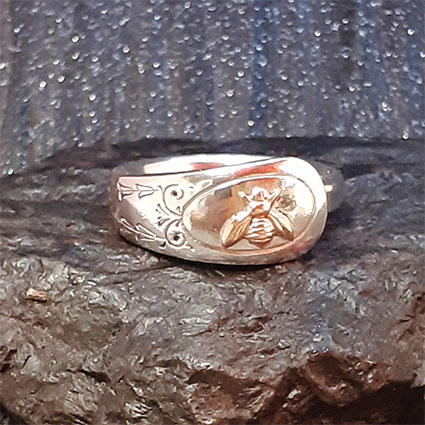History of the Spoon ring

It is said that Spoon rings were first made in 17th century England as wedding rings by servants who could not afford expensive precious metals. All but the poorest households employed servants, who usually lived in, sleeping in attics, kitchens, or basements. Pay was low but include their keep and often their clothing. Servants would steal a silver spoon from their master and have it turned into a wedding ring. Usually rings were made from the metal handles of table cutlery. In those days, solid silver cutlery was highly prized and often displayed the family crest of the wealthy family who commissioned, owned and used the pieces. Thus, the earliest spoon rings served as symbols of love and commitment, in defiance of strict social and economic barriers.
Servants who were caught were sentenced for “stealing a silver spoon”. An expression of love would be punished with a sentence of 7 years imprisonment overseas.
sterling silver has durability. Pure silver is very soft, making it a poor choice for an everyday ring, such as an engagement ring or wedding band. The addition of copper makes silver strong. … Sometimes the number “925” is used to specify that a metal is sterling silver and designates a silver alloy at 92.5%.
Continental or European Silver is marked with indicators from 800 to 850 designates a silver alloy at 80%-85%. All Julissimo’s Jewellery is sterling silver.

Ever since the 17th century Spoon rings have been a timeless and unique gift, a wonderful piece of heritage not forgotten and now you could own a piece of recycled solid silver cutlery from Julissimo Jewellery that could be between 50 to 200 years old with traditional decoration.
Our spoon rings can be adjusted to be made bigger or smaller than their current size which is detailed in the description of each ring, please do message Juliet@julissimo.co.uk for further information.

